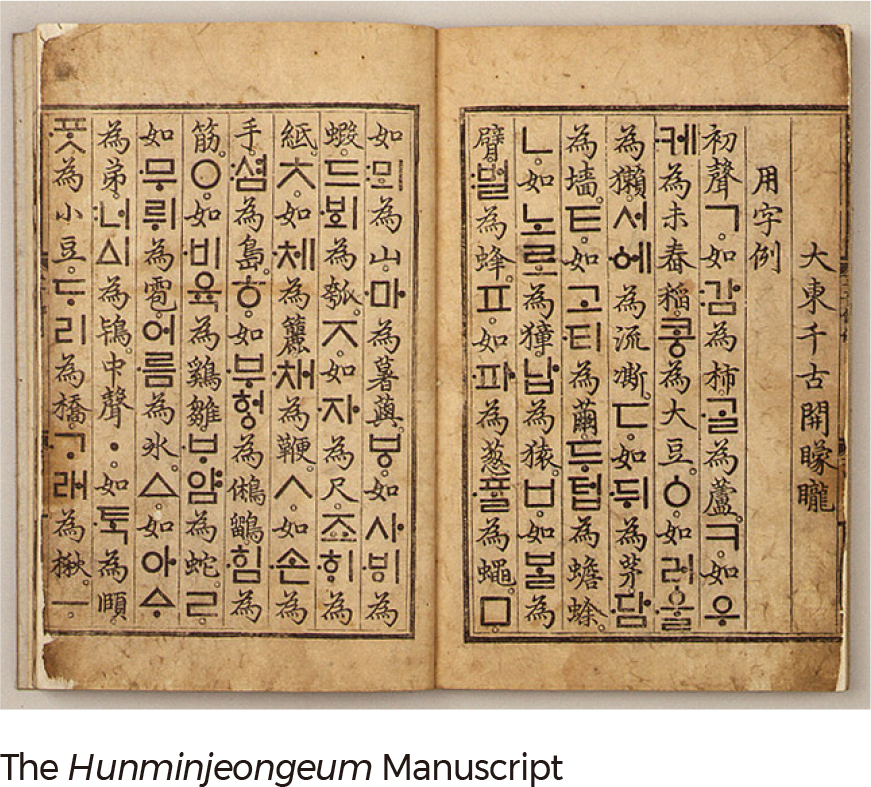Comprehensive Edition 2022
Korean Language: A Defining Cultural Symbol
The Korean language represents the Koreanic language family, which has been spoken on the Korean Peninsula and parts of Manchuria for thousands of years. Despite attempts to demonstrate a relationship between Korean and various language families spoken elsewhere in Asia, any such connection is tenuous and remains uncertain. Apart from sharing loan words with Japanese, for example, Korean appears to have been evolving as a separate language for a long time. Beginning in the Gojoseon period, written Korean used Hanja script, based on Chinese characters. In 1443 AD, King Sejong the Great (1418–1450) devised a new alphabet known as Hangeul, that is the official script used today for Korean. Sejong designed Hangeul to make it easier for all classes of society to learn to read and write. Hangeul is a well-designed, orderly script that encodes features of pronunciation in a systematic way using 24 letters: 14 consonants and 10 vowels. These can be combined to form grouped symbols representing syllables. Unlike Chinese and Japanese, Korean writing typically runs from left to right. Because of its systematic structure, Hangeul has been well-suited for use with modern technological devices such as mobile phones.
Korean language and the Hangeul script are used in both North and South Korea. Since their separation, some differences in dialect and vocabulary have emerged between the two states. Meanwhile, regional differences among dialects within South Korea have narrowed in the past century as a result of efficient transportation and increased mobility and interaction between regions. Within South Korea, six dialects have been identified, namely the standard, Gangwon, Chungcheong, Jeolla, Gyeongsang, and Jeju dialects. This classification was used in a 2015 survey performed by the National Institute of the Korean Language that measured Koreans’ consciousness of language use. The nationwide survey showed that 54.5% claimed to use the standard dialect, 26.4% used the Gyeongsang dialect, 9.7% used the Jeolla dialect, 5.8% used the Chungcheong dialect, 2.2% used the Gangwon dialect, 1.3% used the Jeju dialect, and 0.1% used the North Korean dialect. Today, migration and urbanization impact the usage of local dialects.
“Memory of the World” is an international initiative led by UNESCO in order to facilitate and encourage the preservation of humanity’s valuable documentary heritage, such as official documents, books, works of art, letters, and historical monuments. Since 1997, it has nominated such artifacts every two years to the Memory of the World. Most of the Korean heritage materials designated are textual materials like books, diaries, and government records. By 2019, seventeen Korean items had been registered as such. Korea ranks first in all of Asia for its preservation of such documentary materials and ranks fifth in the world overall. Some of these items are also designated as national treasures, such as the Hunmin jeongeum Manuscript. Hunmin jeongeum is the original name for Hangeul. This manuscript explains the reasons for creating the new letters and the scientific principles behind their use. |







